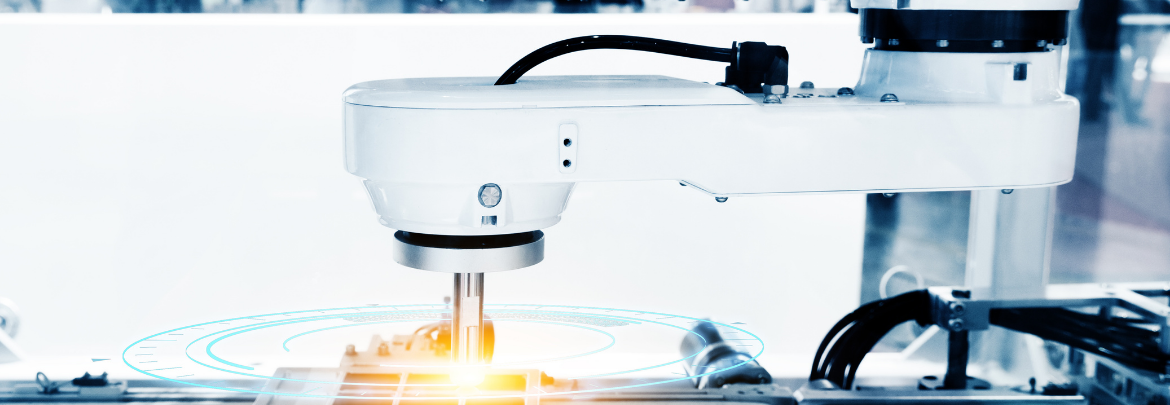Midwest manufacturers are waking up to the benefits of plant automation. While robots have been popular in European plants and U.S. East and West coast operations, the Midwest has been a bit slower to adopt them. The labor shortage has provided a significant nudge toward investigating and implementing robotic solutions across various industries.
One of the first questions manufacturers will face when preparing to automate a process is what type of solution is the best fit. Step one is to understand the difference between industrial traditional and collaborative robots. The main difference between traditional robots and cobots is that cobots are designed to work collaboratively with humans. Read on to learn more about cobots vs. robots!
Traditional Robots
“Industrial” and “non-collaborative” are both synonyms for traditional robots. They are best suited for larger operations that need big batches and require minimal variability. Traditional robots are designed and built to handle a variety of payloads with relatively high speeds, and applications targeted with high volumes and repeatability. They are typically large and fixed. It’s important to note that industrial robots can pose a significant risk to humans working alongside the robot. To protect employees, safety measures must be taken. Machine guarding or caging should be used to keep employees from harm.
Deployment for traditional robots can be complex. Comprehensive programming is required. Most likely, professional services are needed for the programming and integration of the equipment. Successful deployment can be costly and take weeks to accomplish.
Collaborative Robots (Cobots)
In the past decade, demand has proven a need for a robot system to work alongside humans while offering a more modern and straightforward programming style. Often called cobots, collaborative robots are best suited for manufacturers with lower volume and higher variability. Collaborative robots for manufacturing provide less risk to human safety than traditional robots and are better suited for environments that require adaptability. They offer flexibility for fluctuating work environments that traditional robots can’t match.
Deployment for a cobot solution is typically less involved than the traditional robot. For some applications, only simple programming is required. Newer or less experienced users can often set up a cobot solution in less time than a traditional robot. Manufacturers typically see a return on their investment sooner with a cobot because they have lower upfront costs and less expensive integration.
End of Arm Tooling Requirements
The next step in identifying the right automation solution is considering End of Arm tooling (EoAT) needs. For traditional robots, the EoAT doesn’t need to be designed with human safety in mind, as it will be guarded and kept away from people. Their EoAT is often highly specific to the task.
Because cobots are intended to work with human employees, safety is a top priority which leads to EoAT being critical and often not included by the robot manufacturer. For most collaborative robots, only the robot goes through the safety certification of TUV or ISO. This ultimately leaves the risk assessment for the end user, integrator, or 3rd party sourcing of collaborative grippers. EoAT safety is often overlooked in a collaborative environment, especially if the collaborative robot can run in a non-collaborative mode. With ever-growing demand, companies are developing safe EoAT for cobots that are highly flexible and easy to change for new processes.
Increased Productivity
Both traditional robots and collaborative robots can offer increased productivity. Automating boring and monotonous tasks frees employees to tackle more creative and engaging work. And in a highly competitive labor market, creating an attractive work environment helps to retain essential staff.
If you are interested in learning more about industrial automation solutions, don’t hesitate to reach out. Sure Controls has a team of automation experts available to assist and answer any questions you may have. You can also check out Sure Controls’ e-store if you’re in need of industrial automation parts!
Contact Sure Controls at (800)-844-8405 or fill out a contact form online.

